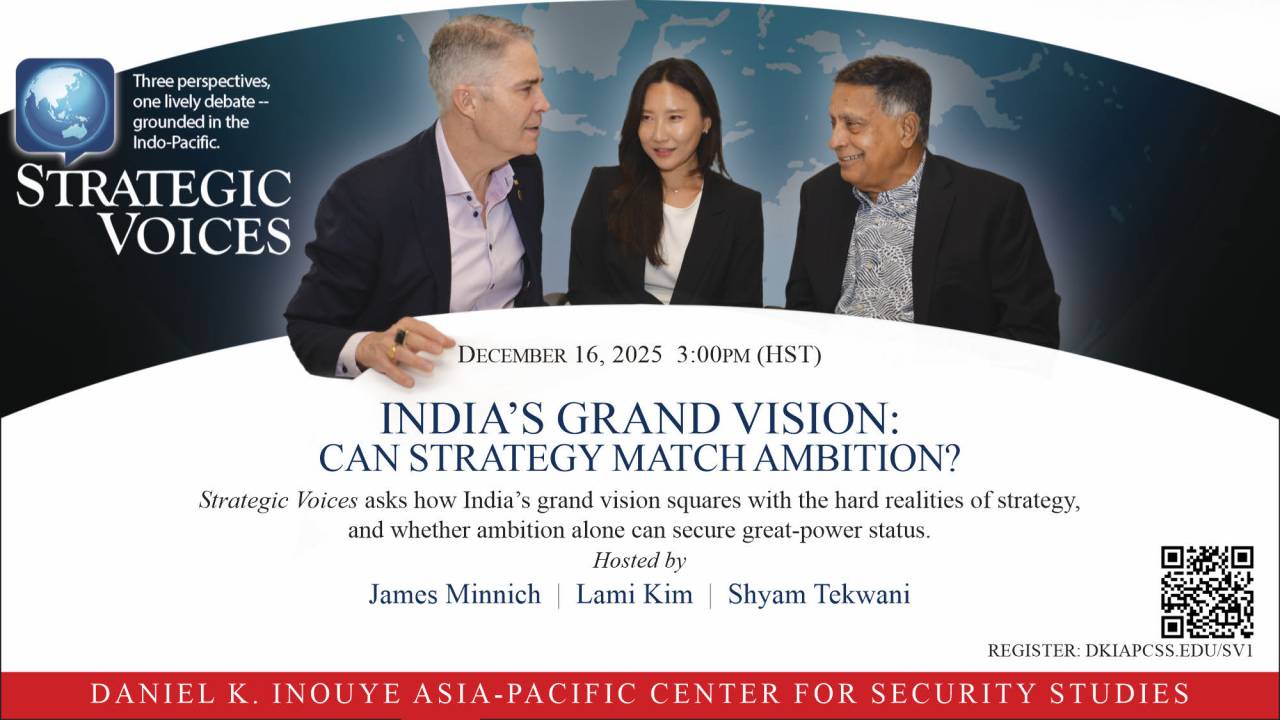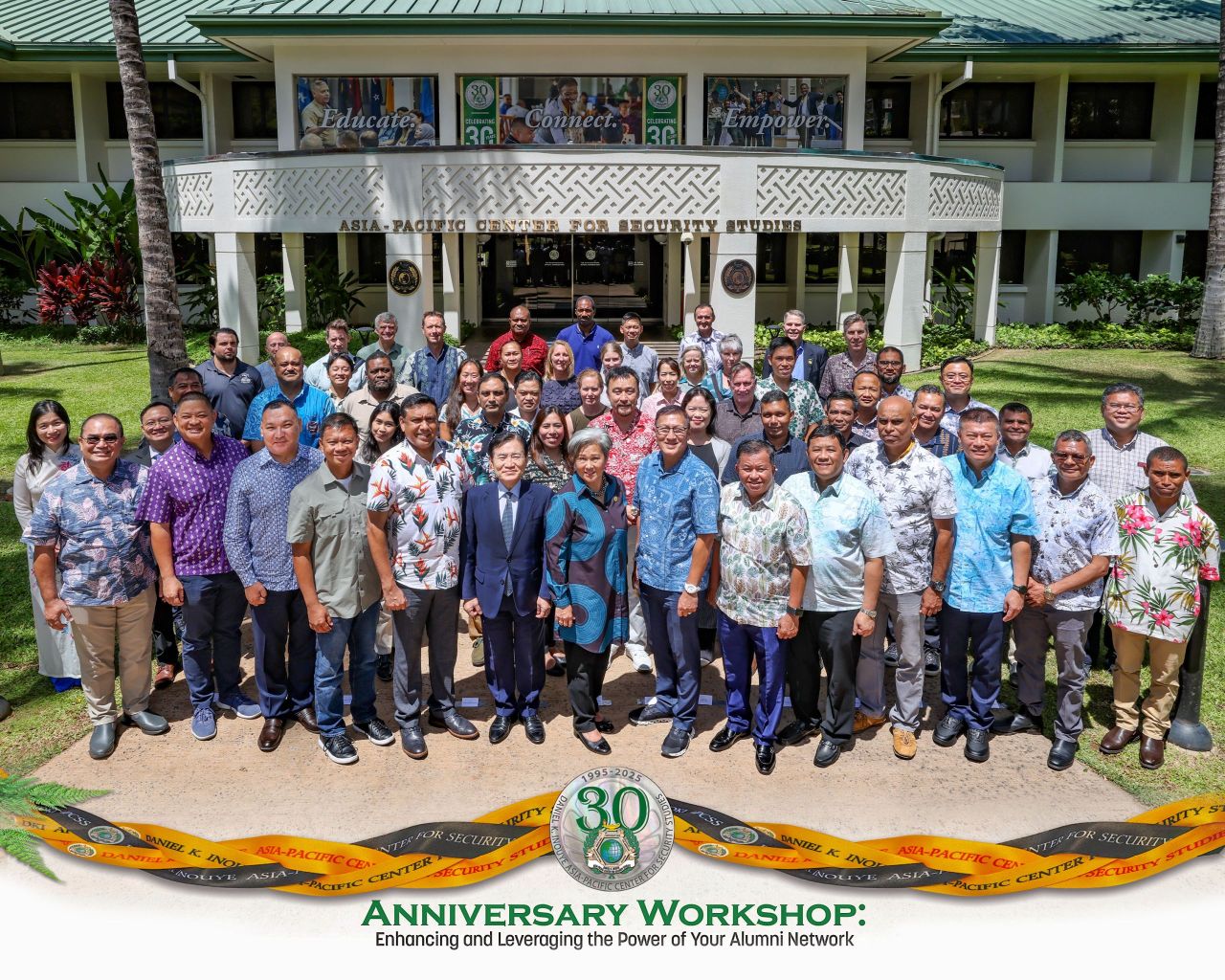By Dr. James M. Minnich
HONOLULU – (January 28, 2025) The idyllic turquoise waters and vibrant cultures of the Indo-Pacific often mask a harsher reality. This vast region, home to two-thirds of humanity, is increasingly shaped by a confluence of crises. Devastating typhoons in the Philippines, rising sea levels threatening the Pacific Islands, and geopolitical rivalries colliding with humanitarian needs create a complex and precarious landscape for aid delivery. In Dialogue Episode 35, Jonathan Robinson, a seasoned humanitarian adviser and assistant professor at the U.S. Naval War College, joined me to examine this precarious intersection of humanity and geopolitics.
Contested Waters: Aid in the Shadow of Conflict
The South China Sea exemplifies the challenges of delivering humanitarian assistance in contested spaces. Territorial disputes, military posturing, and restricted access complicate efforts to remain neutral and effective. Robinson highlighted the importance of the four humanitarian principles—neutrality, impartiality, independence, and humanity—as vital tools for navigating these treacherous waters. These principles not only uphold ethical standards but also build trust, ensuring aid reaches those in need without exacerbating political tensions.
Shielding Those Who Serve: Protecting Aid Workers
Humanitarian workers in the Indo-Pacific operate on the edge of danger. In Myanmar, they navigate active conflict zones, where violence and the threat of detention are ever-present. In the Philippines, typhoons and natural disasters bring their own set of challenges, with landslides and flooding often cutting off access to communities. Robinson emphasized that protecting these frontline workers requires a multi-layered approach, including open communication with local communities, strict adherence to international humanitarian law, and proactive security assessments.
The Data Dilemma: Balancing Technology and Ethics
The rise of data-driven tools like geospatial mapping and demographic analysis has revolutionized humanitarian aid, enabling more targeted and efficient interventions. Yet this reliance on technology comes with ethical challenges. Robinson warned of data breaches that can endanger populations and called for stringent privacy controls and ethical frameworks. By balancing technological insights with human relationships, aid organizations can enhance trust and effectiveness.
Culture as Compass: Aid that Empowers
Delivering effective aid requires a deep understanding of the Indo-Pacific’s culture. Robinson underscored the critical role of local knowledge and partnerships in ensuring aid programs empower rather than impose. Employing local staff, engaging grassroots organizations, and tailoring interventions to respect cultural practices can foster dignity and agency among affected communities, leading to more impactful outcomes.
Bridging Divides: Civil-Military Collaboration
Disaster response in the Indo-Pacific often necessitates collaboration between civilian and military actors. Robinson shared his experience in establishing a medical evacuation framework in Syria, emphasizing the importance of sustained dialogue, information sharing, and clear role delineation. Successful collaboration leverages the strengths of both sectors while safeguarding humanitarian neutrality.
The Dragon’s Shadow: China’s Aid Strategy
China’s growing influence in the Indo-Pacific includes its robust fleet of hospital ships, such as the Peace Ark. While these vessels provide critical medical aid, they also reflect a strategic approach to humanitarian assistance. Robinson noted that China’s model often intertwines aid with geopolitical goals, raising questions about neutrality and long-term impact. Understanding and addressing this dynamic is essential to preserving the independence and credibility of humanitarian efforts.
Technology’s Double-Edged Sword:
Advances in technology, from AI-powered disaster forecasting to drones delivering supplies, have transformed humanitarian action. Yet, Robinson cautioned against over-reliance and potential misuse. Context-specific applications, ethical data management, and a focus on building local capacity are vital to ensuring technology enhances, rather than hinders, aid efforts.
A Call to Action: Charting a Course for the Future
The Indo-Pacific faces a turbulent future, with ecological disruption and geopolitical rivalries threatening to worsen humanitarian crises. Navigating this complexity demands a multifaceted approach. Upholding humanitarian principles, fostering local partnerships, embracing collaboration, and responsibly leveraging technology are essential for building a more resilient and equitable future. As Robinson aptly put it, “Communication is key” to bridging divides and ensuring aid reaches those who need it most, even amidst the storm.
Further Exploration:
For those seeking deeper insights, Robinson recommends A Global Force for Good: Sea Services Humanitarian Operations in the Twenty-First Century by John Sherwood. This work offers valuable lessons on the intersection of military capabilities and humanitarian aid, providing a roadmap for future challenges in the Indo-Pacific and beyond.
New episodes coming soon!










Leave A Comment